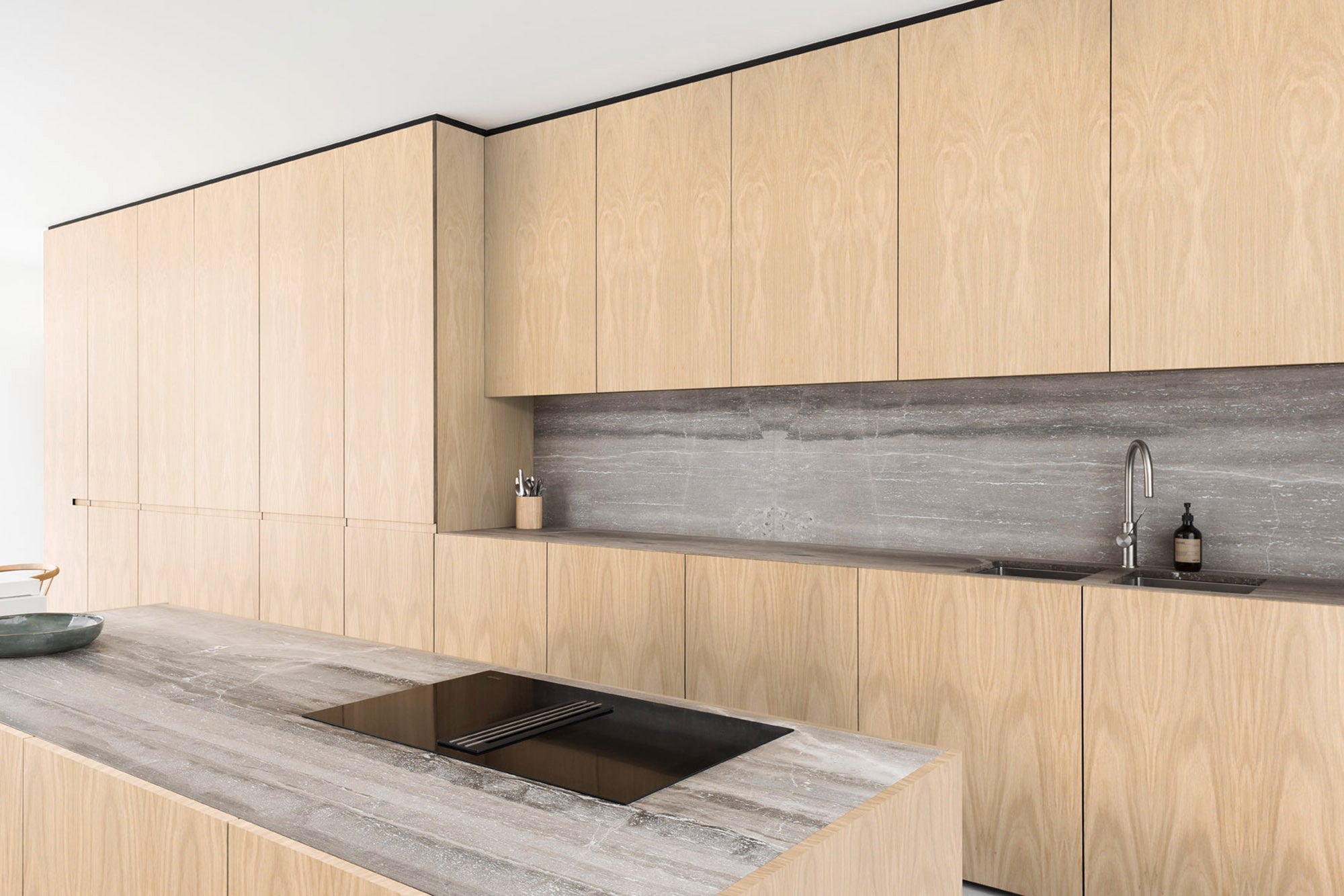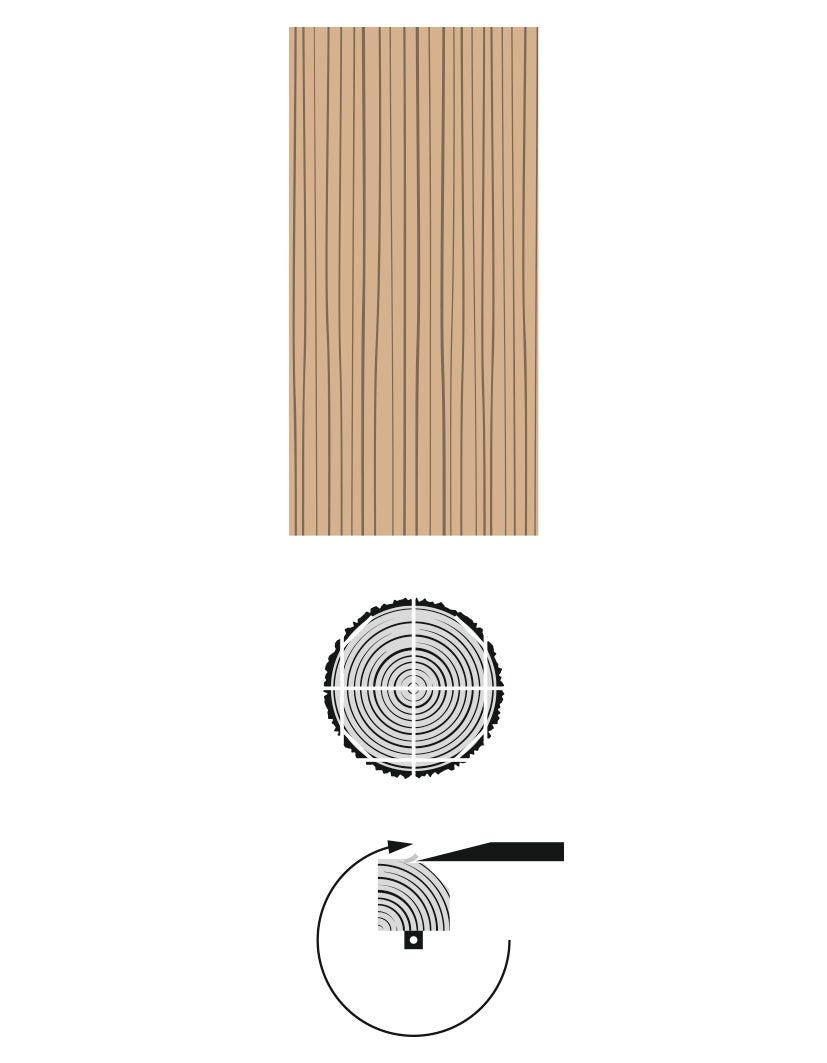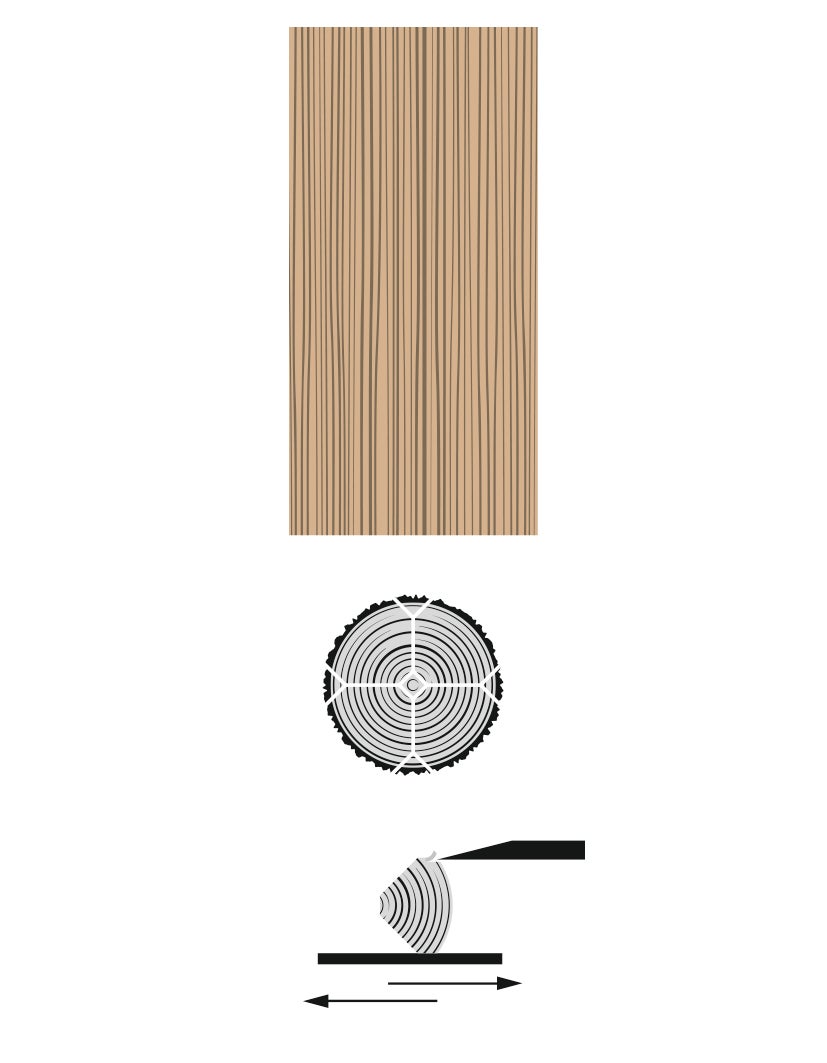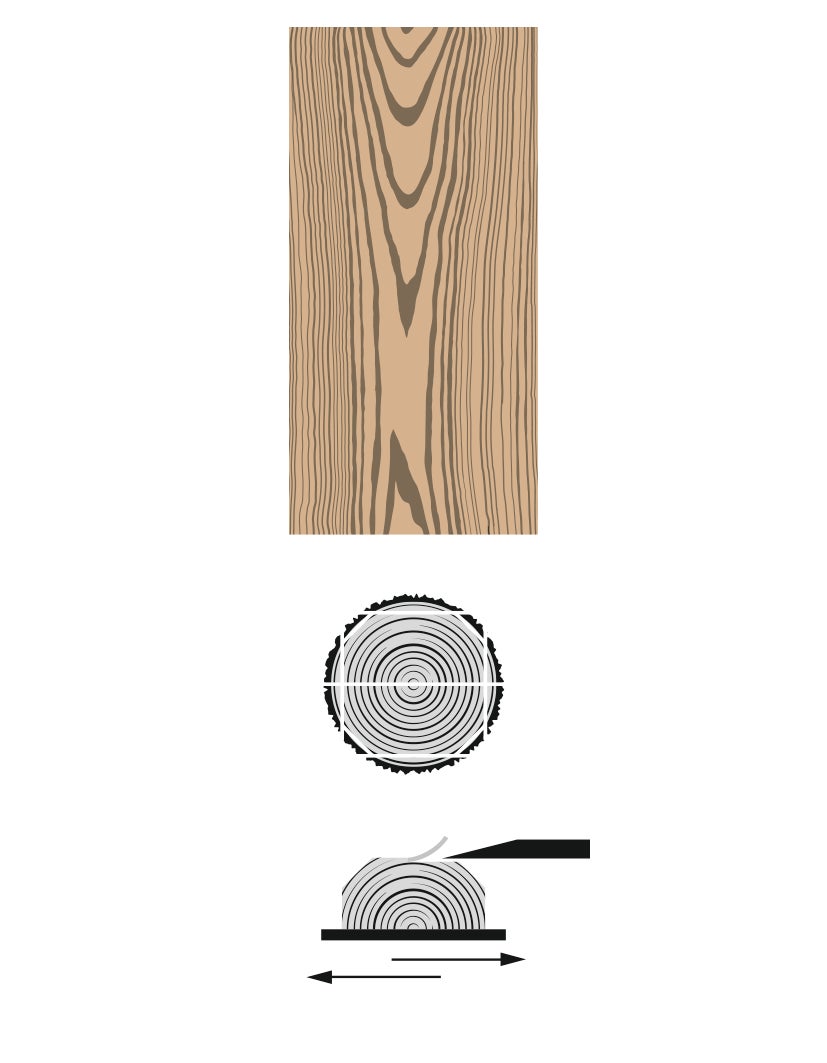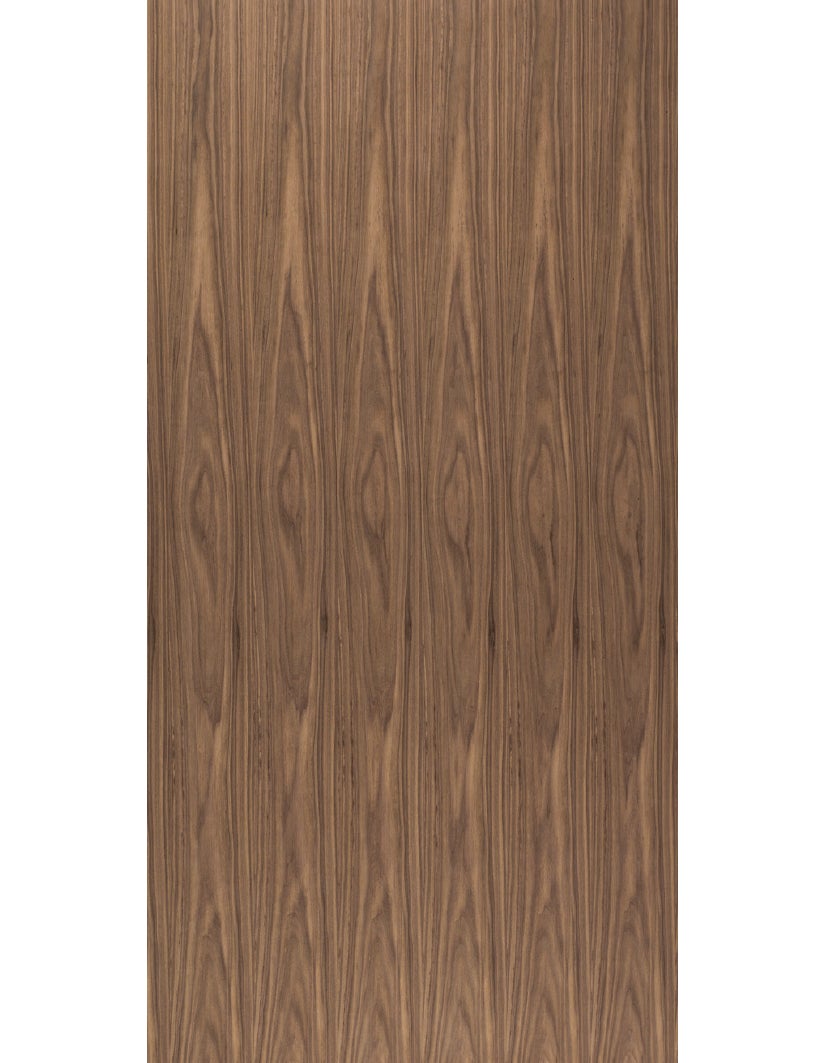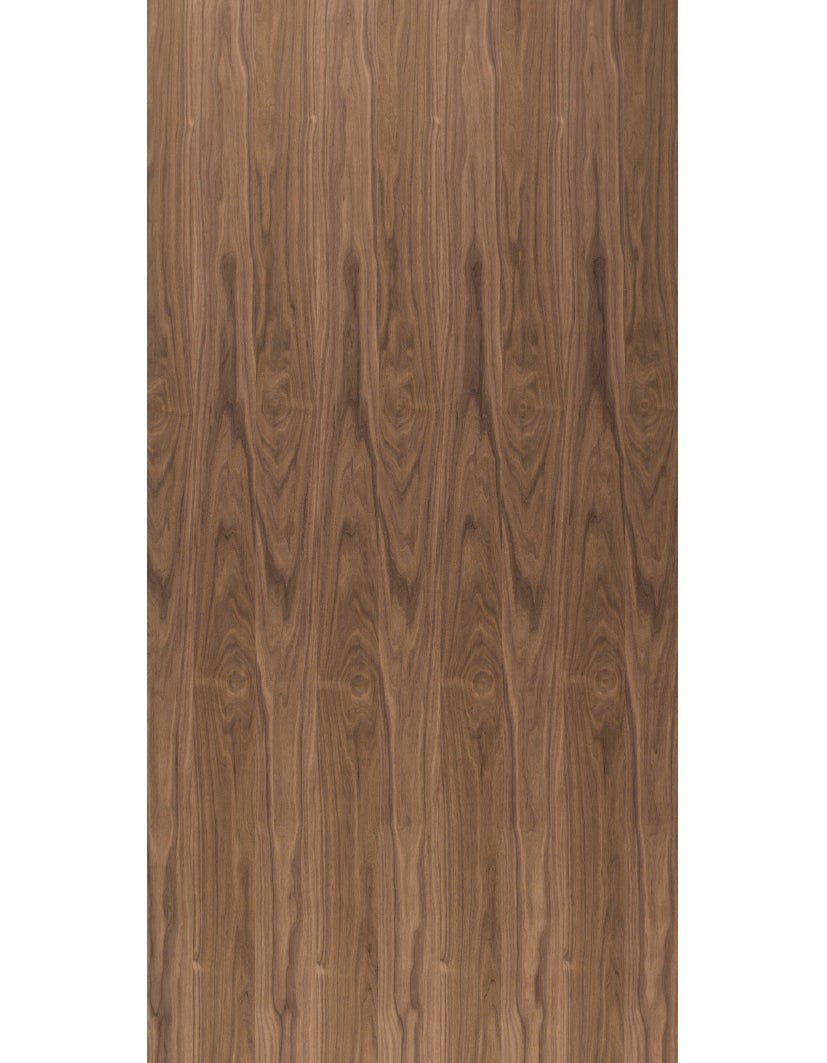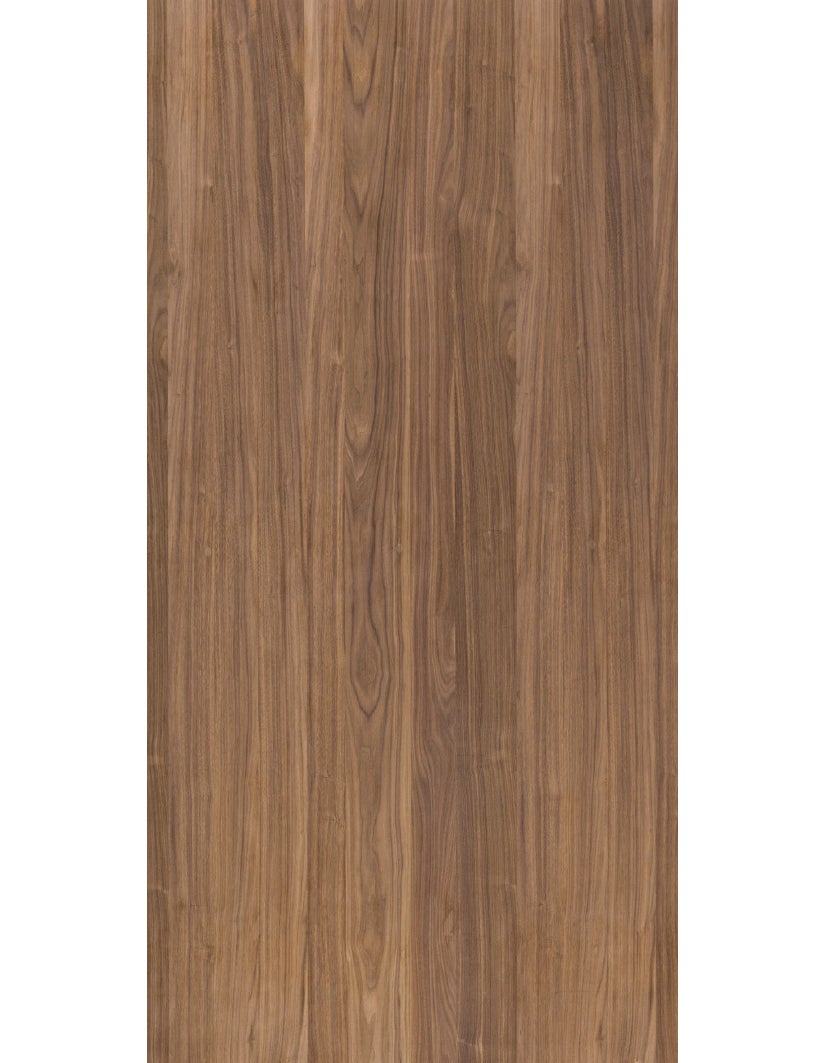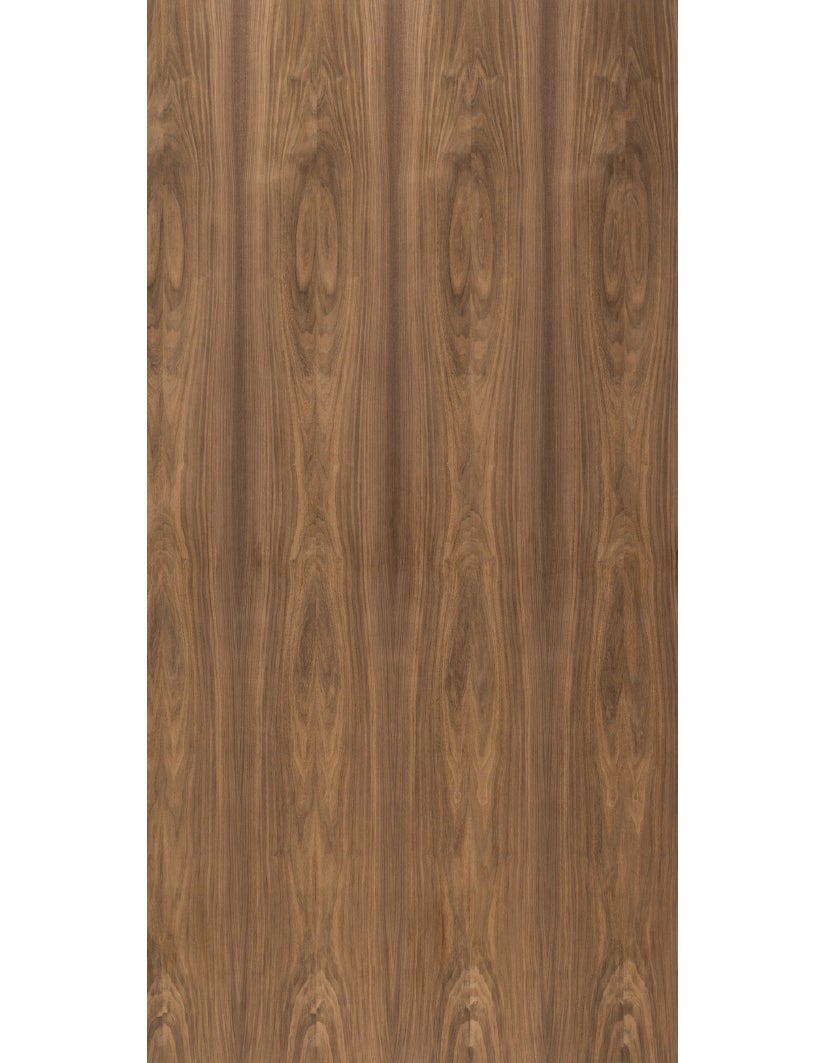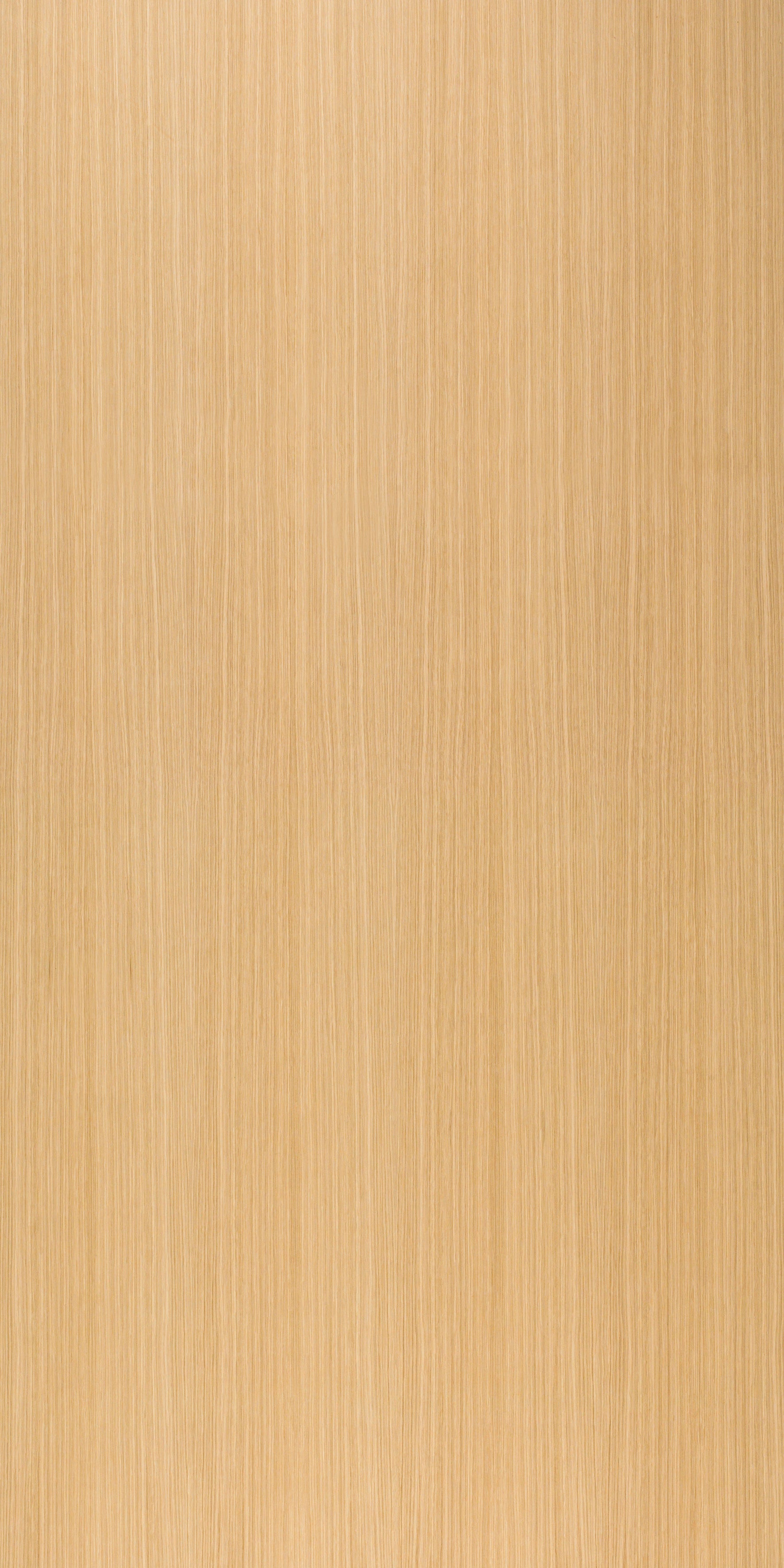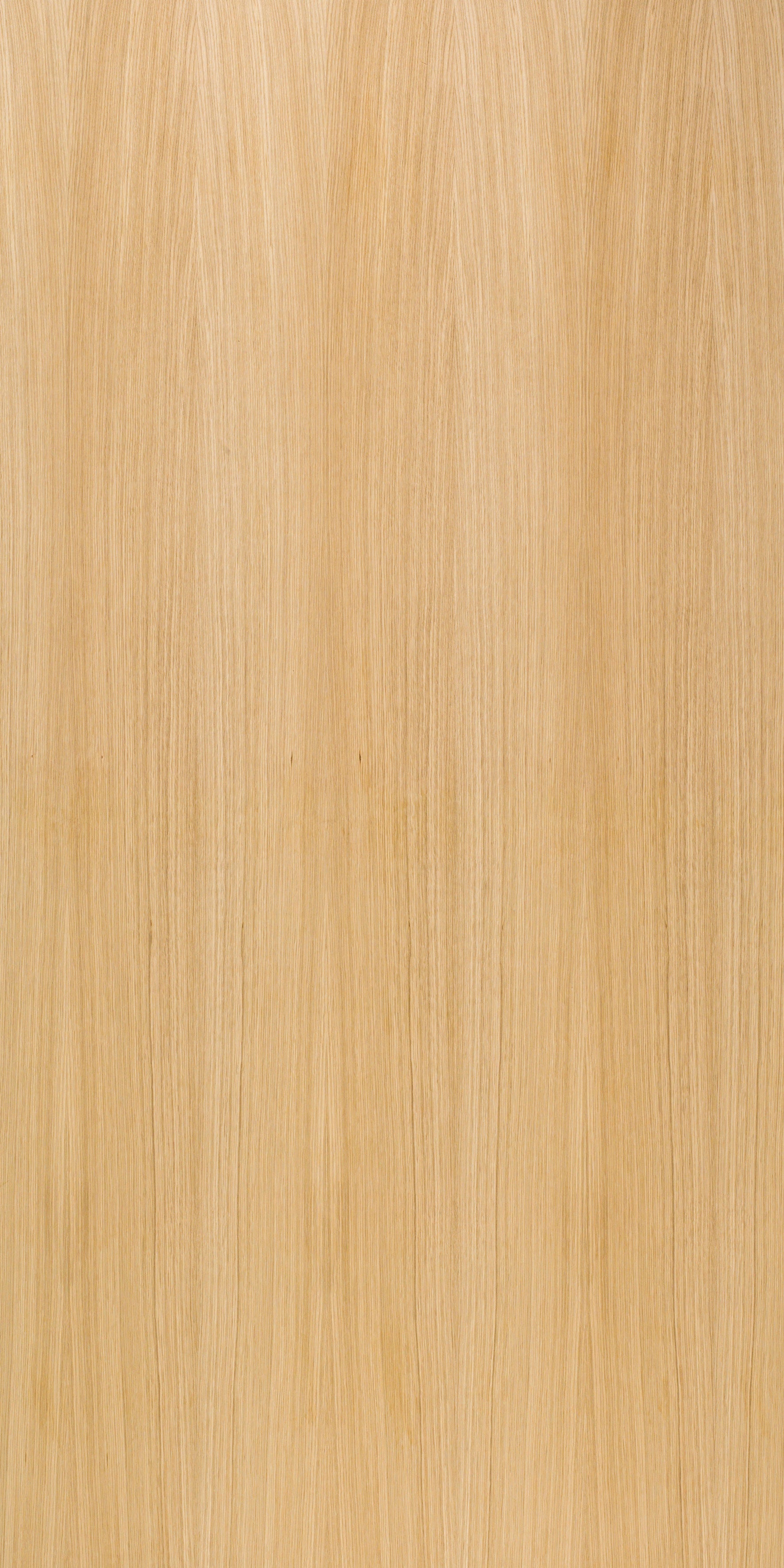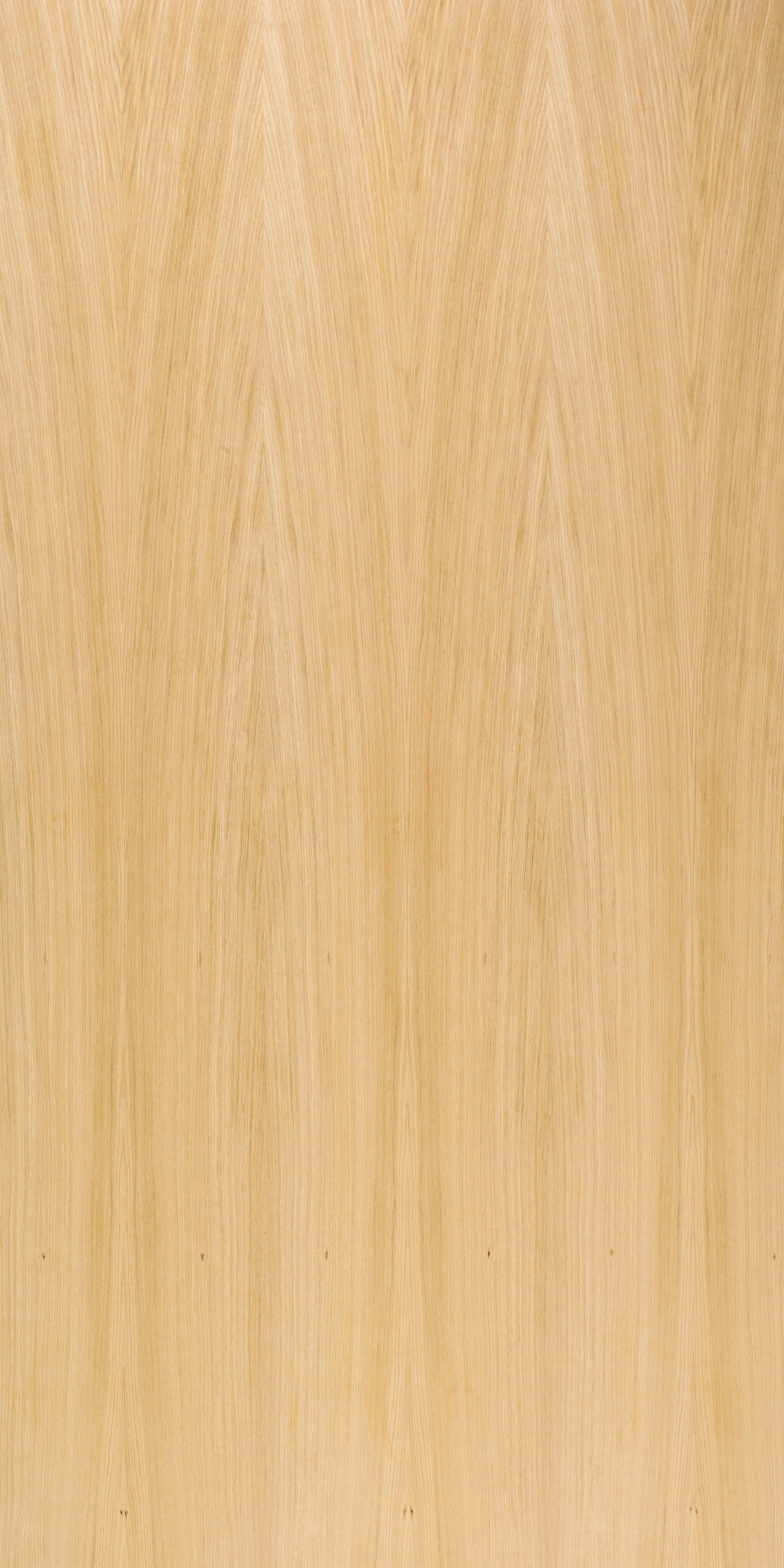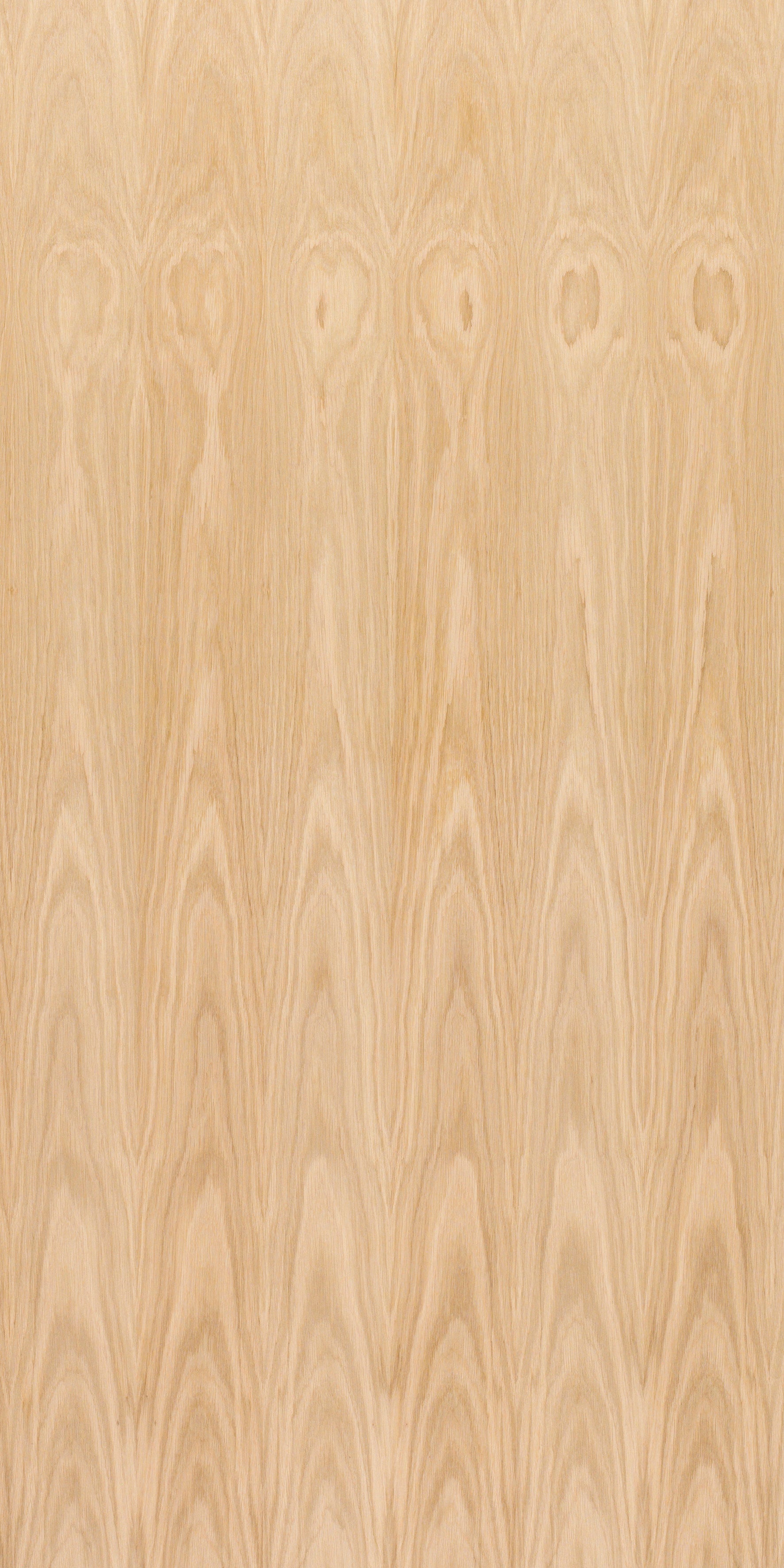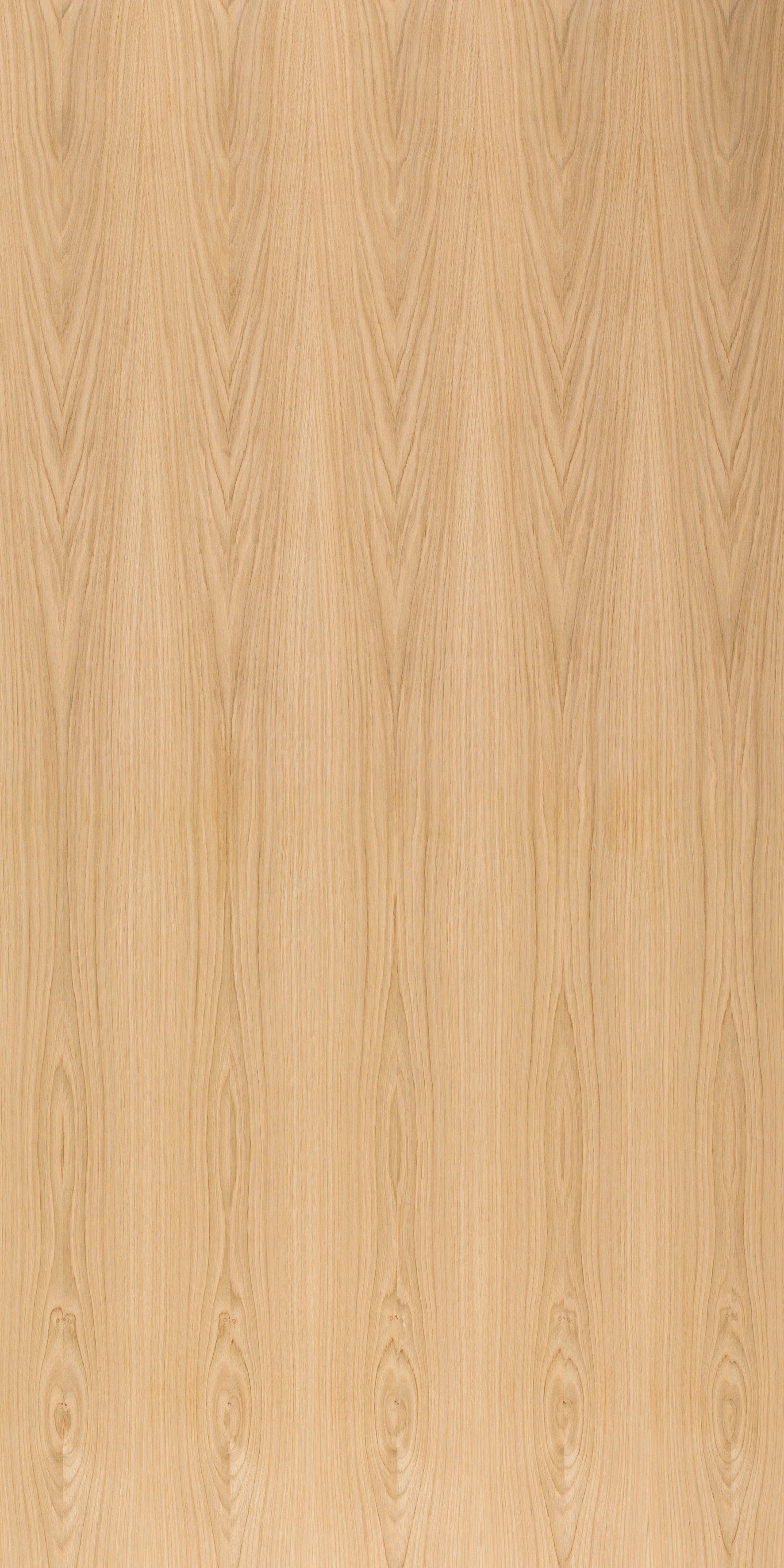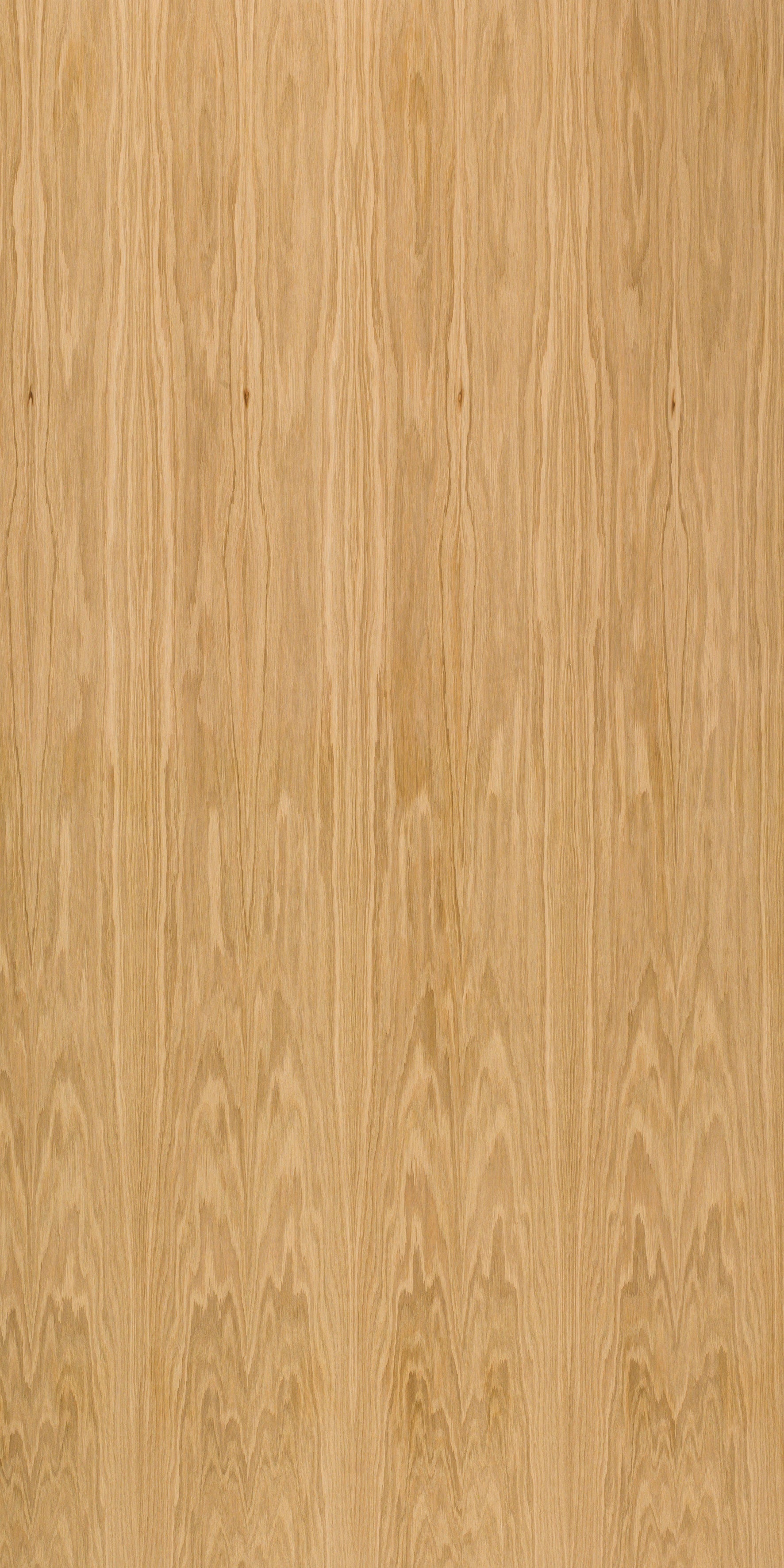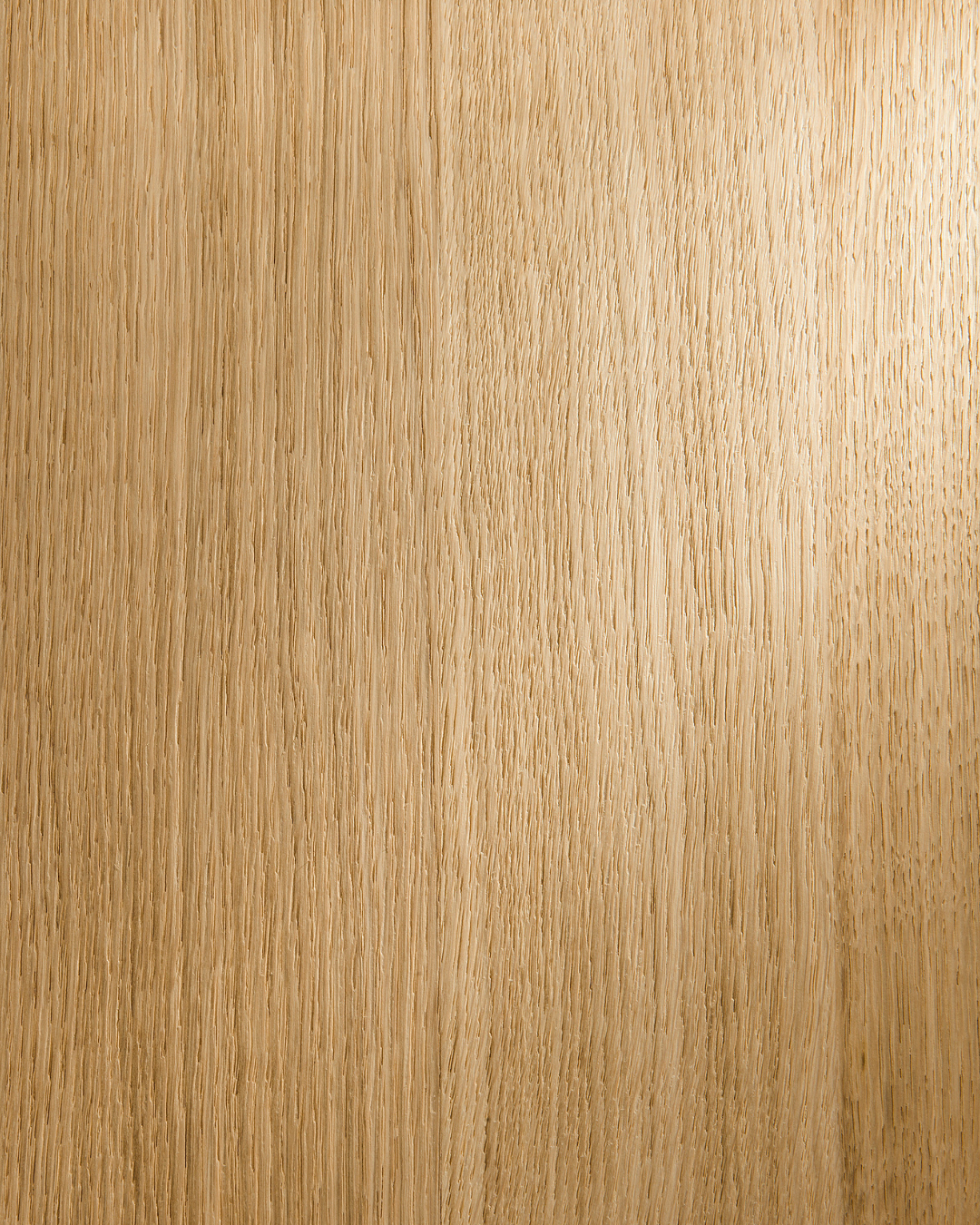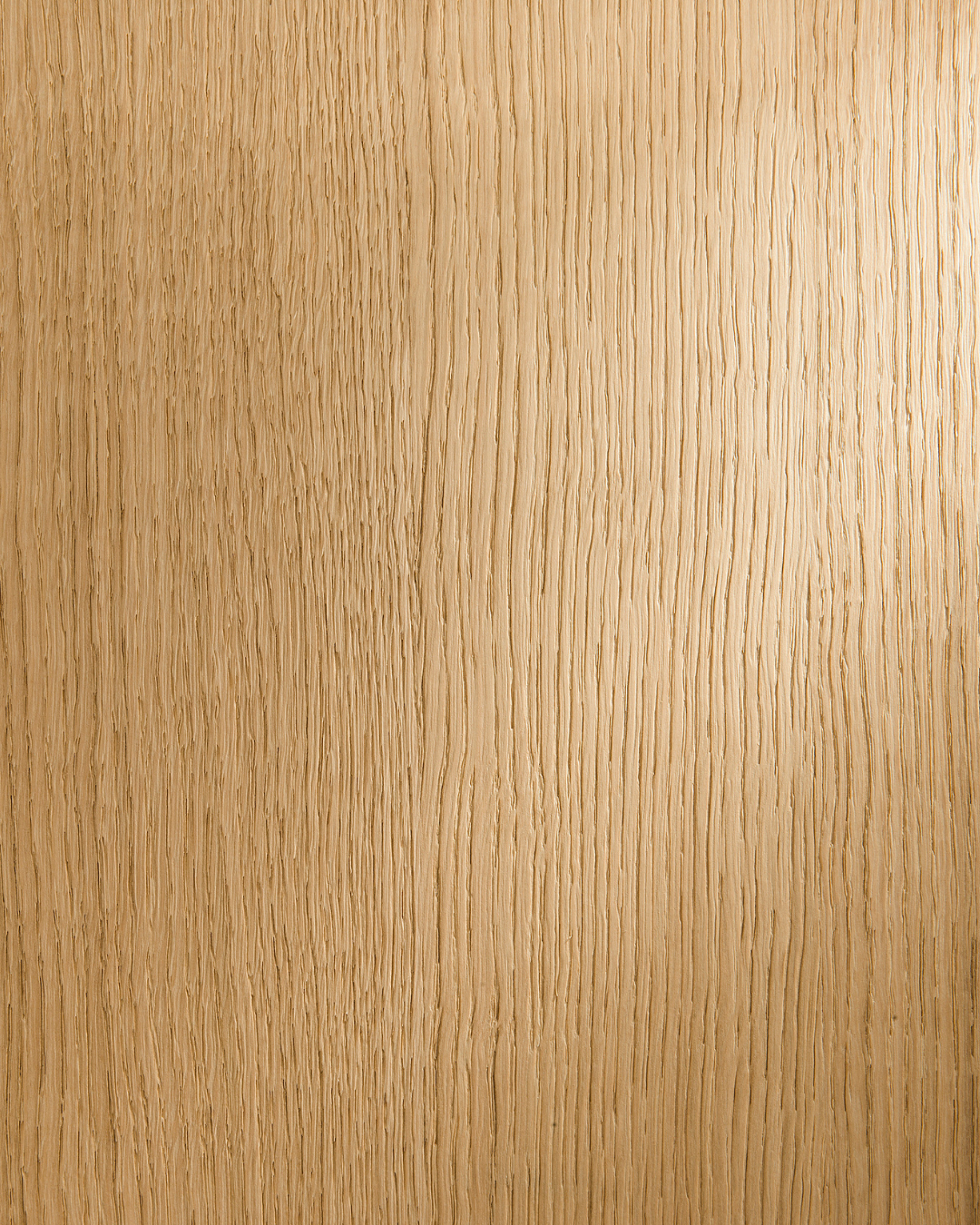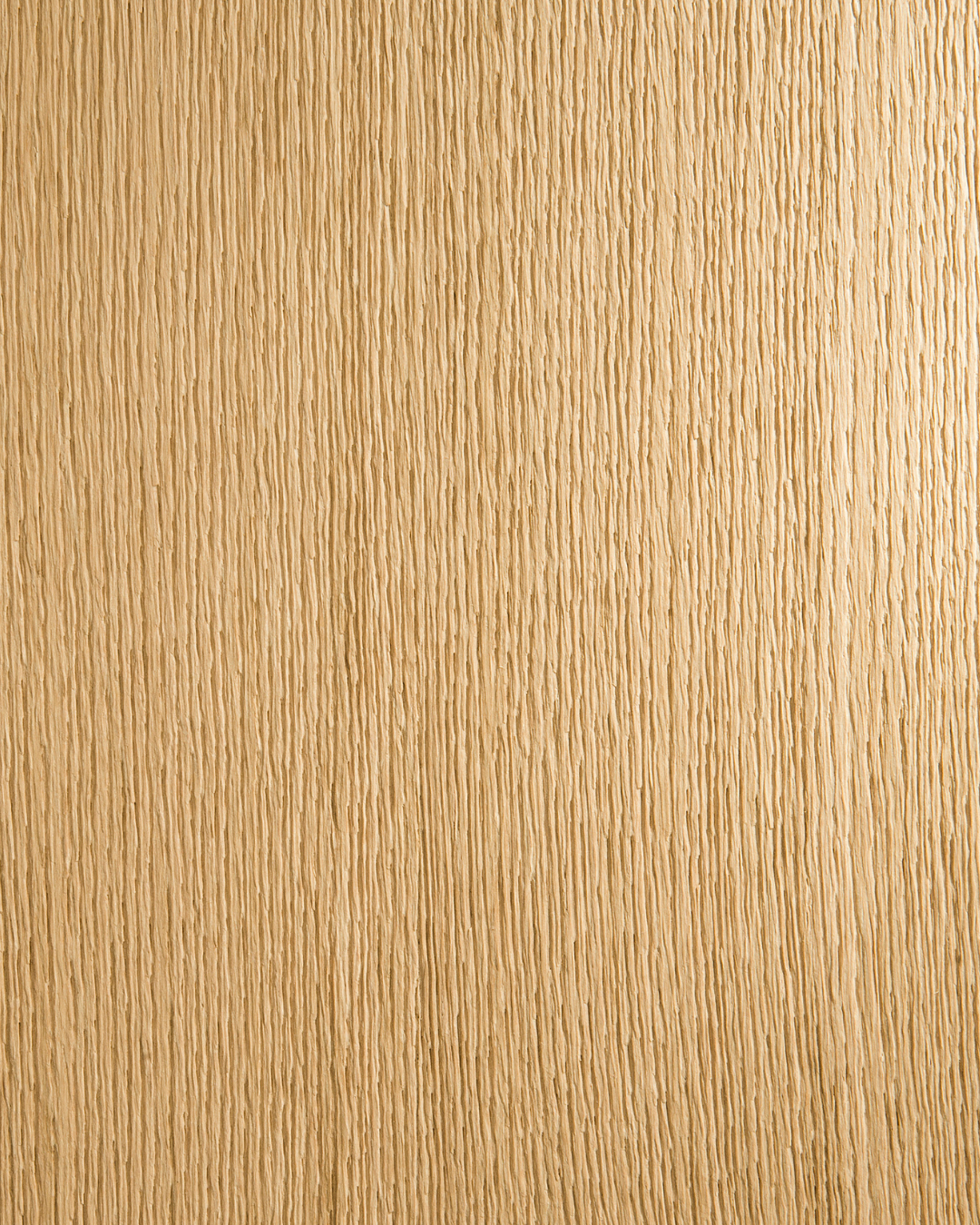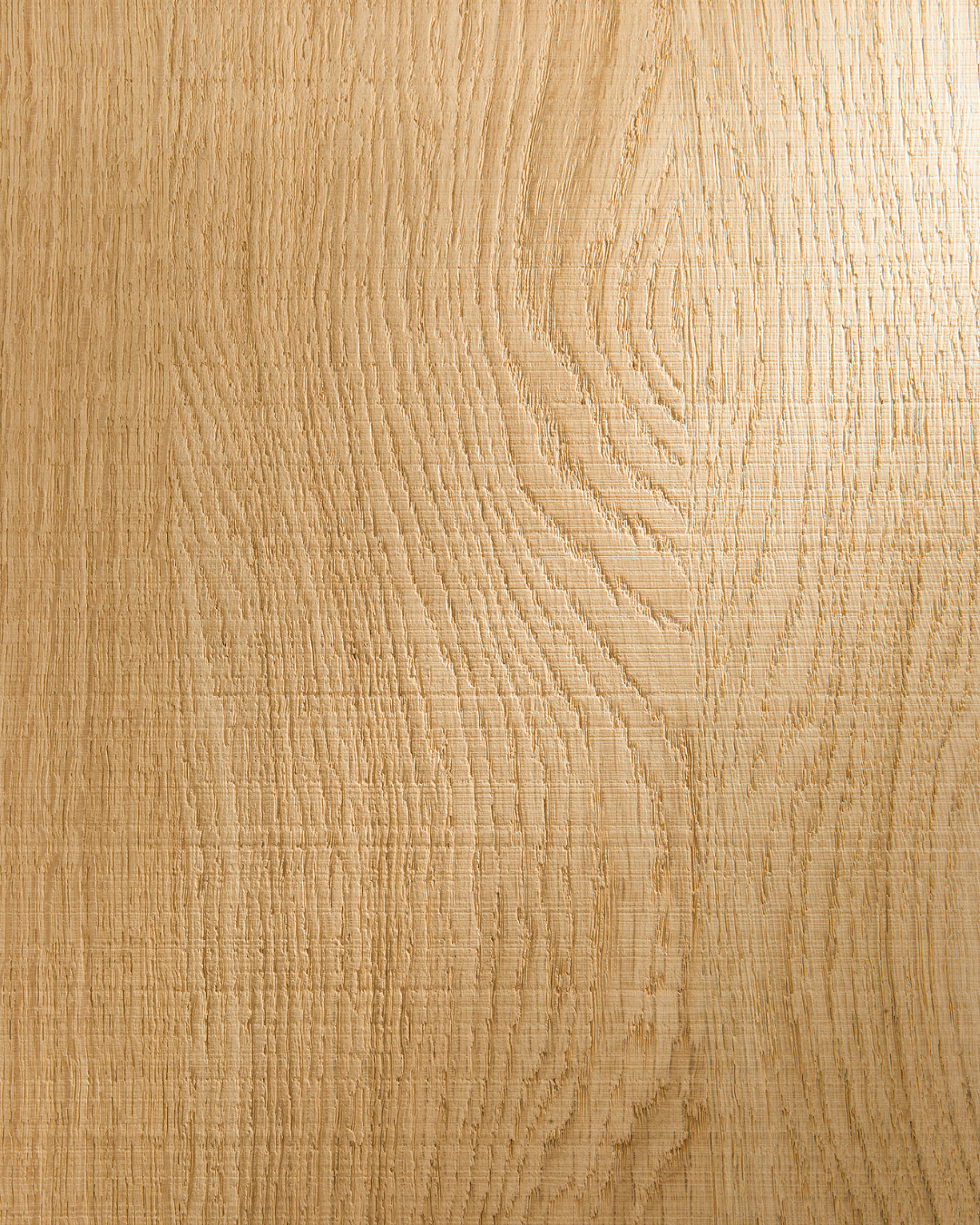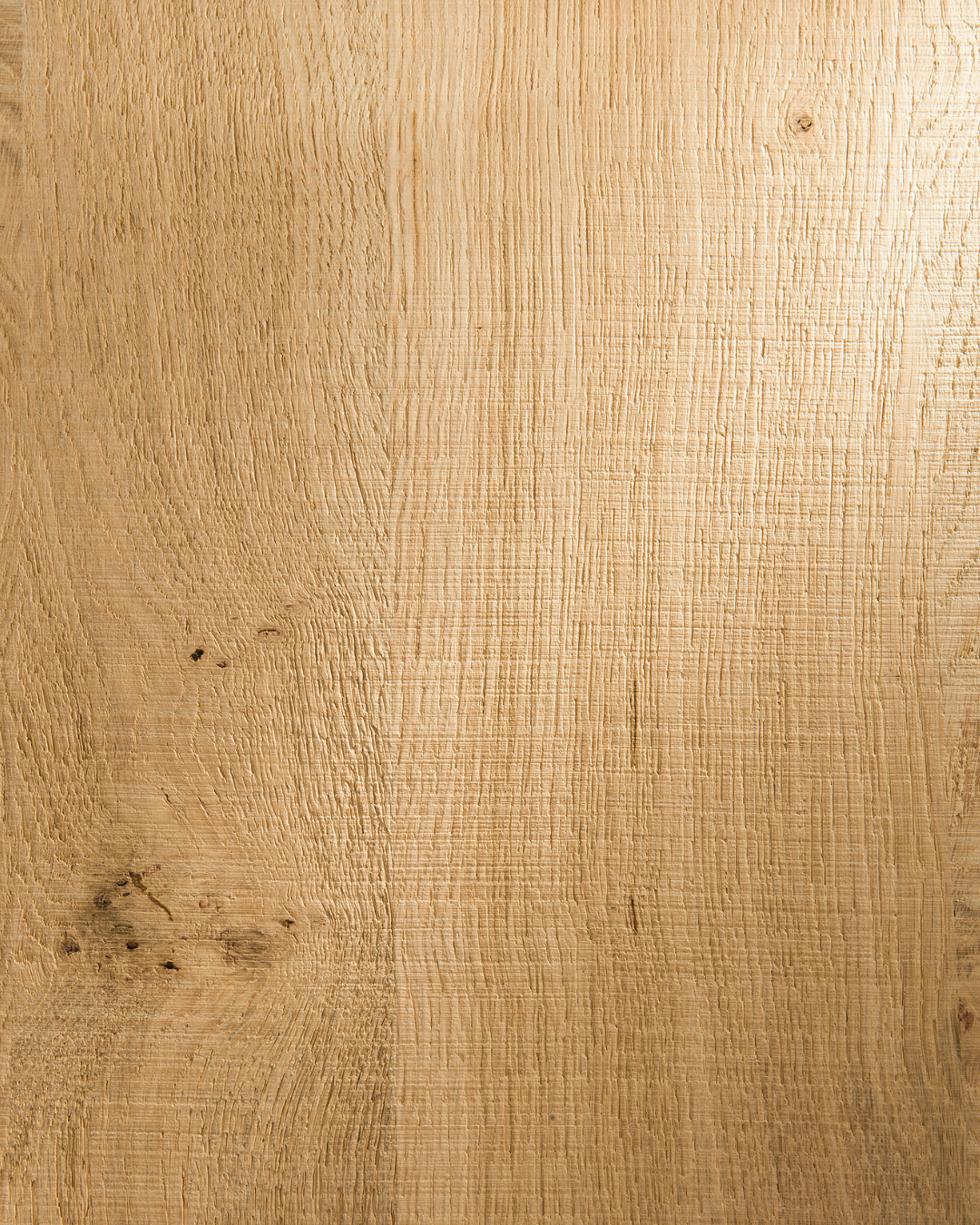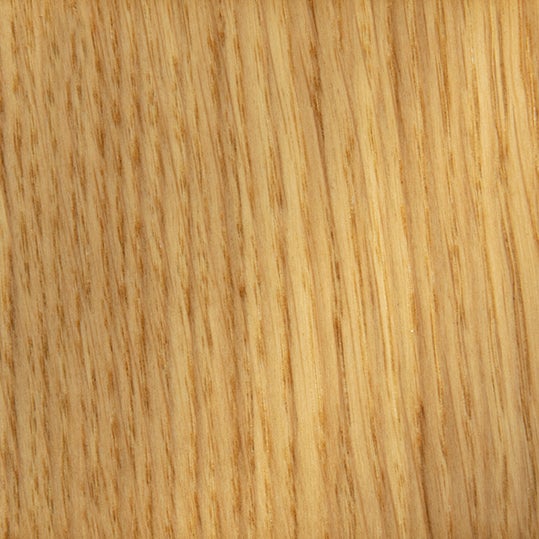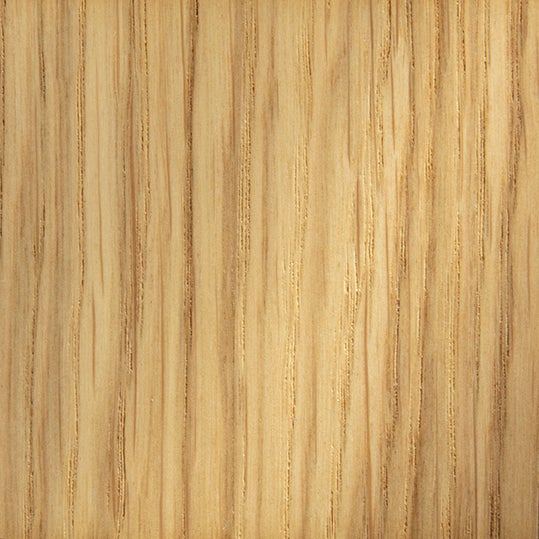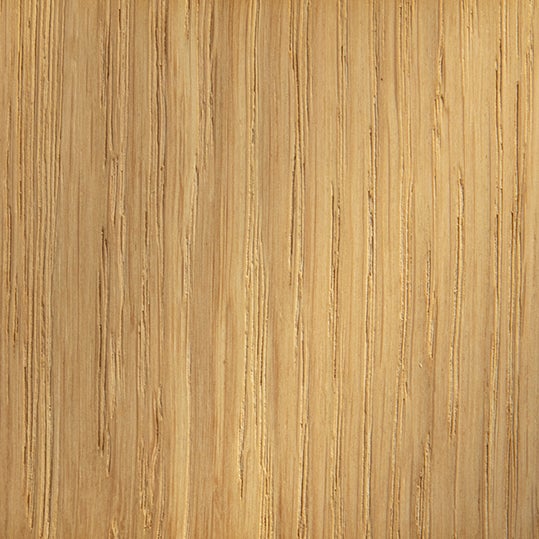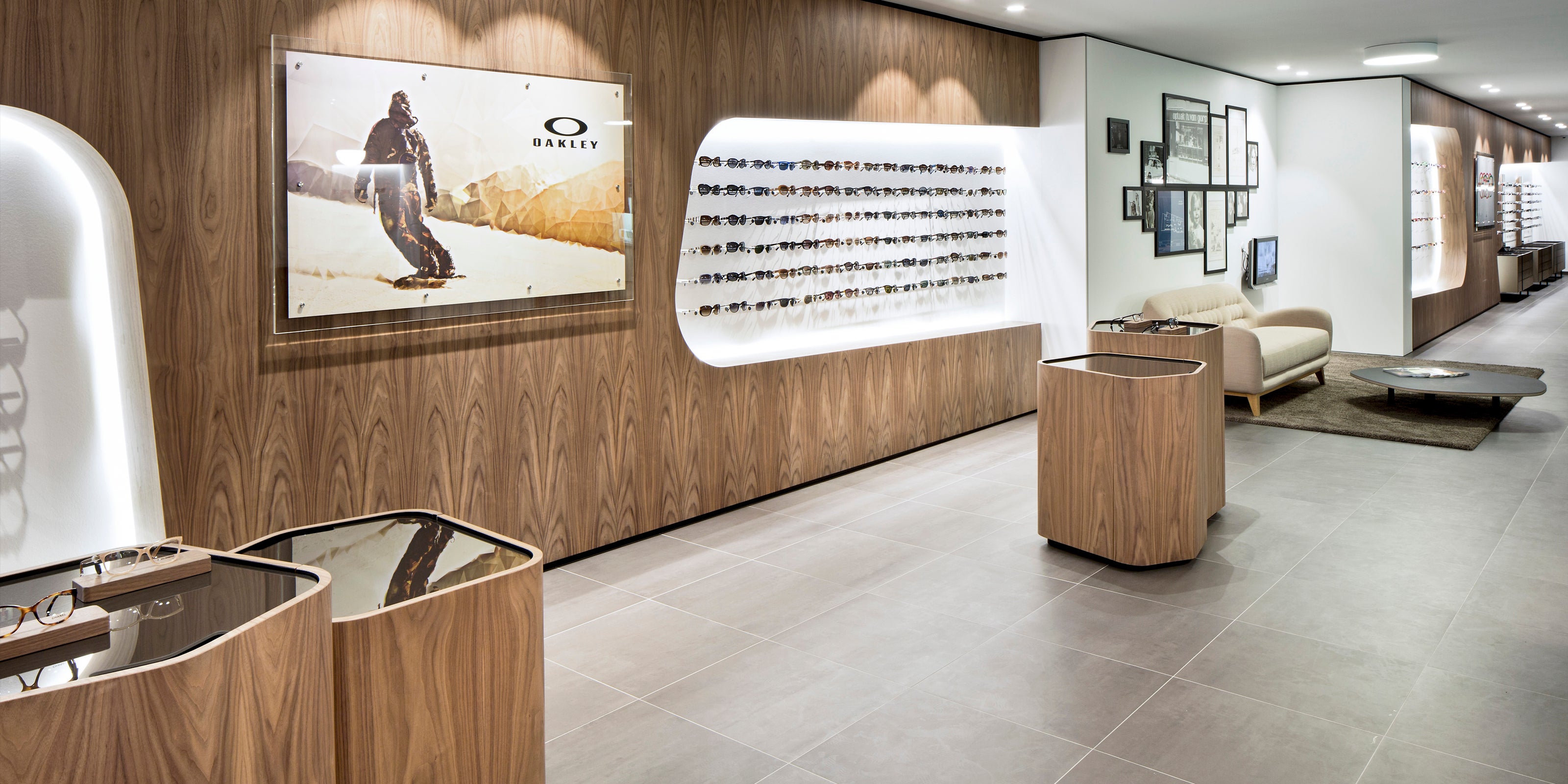
Several factors play a crucial role in defining the final wood look. One of the most significant factors is the type of wood veneer used. You can explore more than 100 wood species in our veneer bible. Different species of wood have unique characteristics that affect the texture, colour and pattern of the veneer.
However, the appearance of the veneer sheet is not solely determined by the wood species: choosing the slicing pattern, the jointing techniques, the quality variety and the finishing all impact the final look.

01
Wood species

02
Slicing pattern

03
Jointing technique

04
Quality grade

05
Finish
The way the veneer is sliced plays a vital role. It results in different patterns: from a flame pattern created by sawing through the heart of the tree to a straight grain pattern achieved by cutting perpendicular to the growth rings (either at a specific angle or not).
Finally, by adding additional textures to the surface of veneer, we can enhance the natural beauty of the product further. Brushing, sawing and distressing have a significant impact on the overall look of veneer wood.
We focus on three possible finishes: staining, varnishing or oiling. These finishes are crucial in terms of protection.
Staining
Applying a colored layer based on stains ensures a great-looking finish. The colour pigment partially penetrates the fibres while preserving the structure of the wood. Many basic colours are available in our colour laboratory. Furthermore, our team of colour specialists can develop a personalised colour with a minimum of 50 sides to finish.
